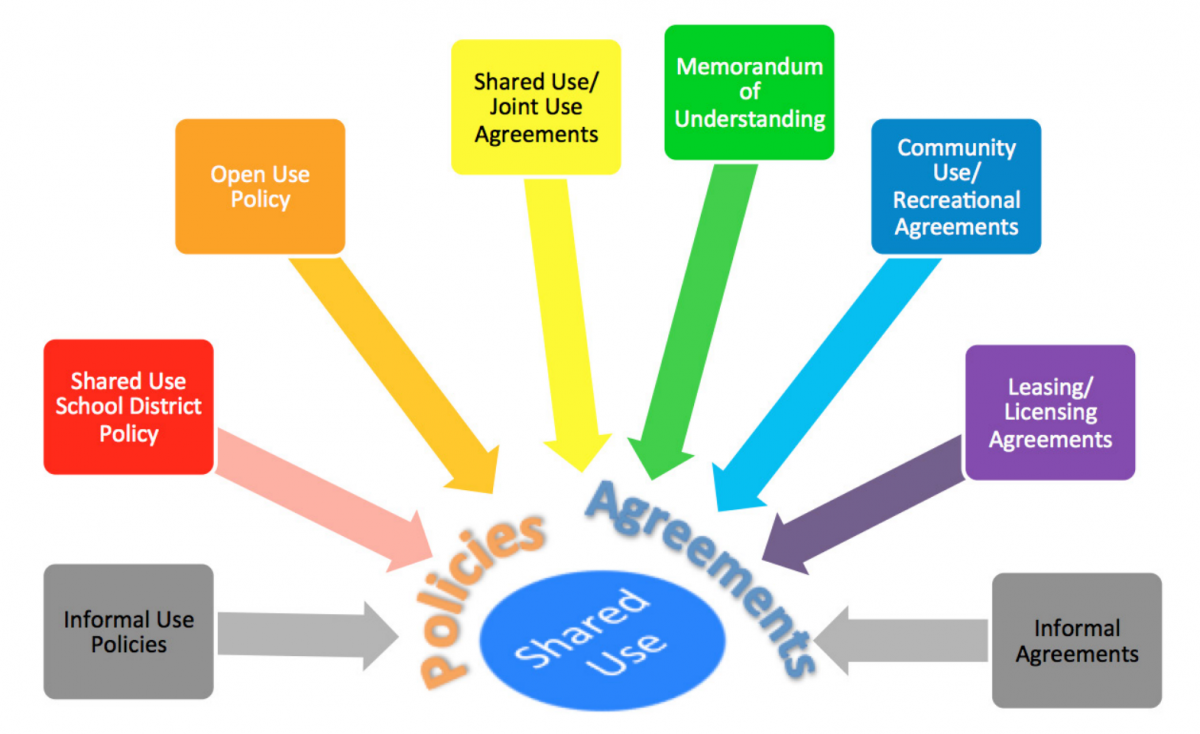 As we are all thinking of getting more physically active this May for National Physical Fitness month, it only makes sense that we look at policies and practices to increase access to opportunities to be more physically active. This brings us to shared use, of course!
As we are all thinking of getting more physically active this May for National Physical Fitness month, it only makes sense that we look at policies and practices to increase access to opportunities to be more physically active. This brings us to shared use, of course!
Recently, I was attending a regional training and someone raised the question, “Why do you use shared use and not joint use anymore?” I’ve also been asked, “We call it community use in our community, does that count as shared use?” Among those of us working to open up schools and other facilities for community use, we often hear these questions. Some practitioners working in the field have stated the schools don’t want to partner with an agency or another entity; they just want to have their campuses open to the community. Can this still be considered “shared use?"
There is a lot of terminology floating around, all aimed at increasing access to physical activity opportunities – so in order to address and hopefully eliminate some of the confusion, we wanted to lay out the different terms and meanings. In addition, we want to be welcoming to and inclusive in the language we use, so that we are able to encourage all different practitioners to continue to do this work and know that they are included in the shared use realm. As your resident “shared use super hero,” I took up the challenge of taking the first stab of figuring it out.

In consultation with our colleagues at Prevention Institute and ChangeLab Solutions, we developed the Spectrum of Shared Use resource to include and differentiate some of the terminology that often comes up when we talk about shared use. The Spectrum of Shared Use resource explores the continuum of types of shared use in our communities -- informal versus formal approaches, policies versus agreements, as well as the differentiation between shared use, community use, recreational use, and leasing agreements. Every locality will take a different approach in how the community can access space. By embracing and understanding different terminology, we can continue to encourage states and local school districts to increase access to physical activity in their communities and feel confident that they fit into the spectrum of shared use. What matters isn’t language – it’s end results! Whatever we call it, let’s increase access to places that have been traditionally closed to the community for recreational purposes and get kids and adults active in their communities.
If you haven’t seen the National Shared Use Task Force’s Collective Statement on shared use, I highly encourage you to check out the multi-sectored statement that illustrates a variety of roles that can be played in the policy adoption or implementation of shared use. Stay tuned for an exciting announcement from the Shared Use Task Force.


